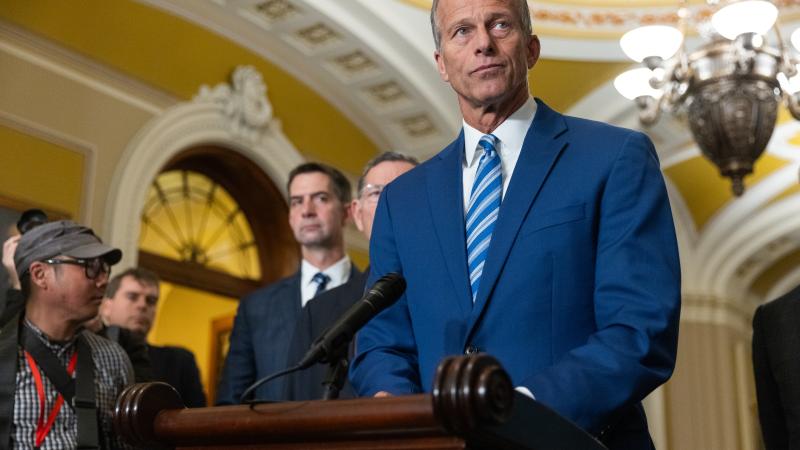Social Security may be insolvent by end of 2033, CBO report's data predicts
Highlighting urgency: Garrett Watson, director of Policy Analysis at the Tax Foundation, told Just the News that Social Security is on a “rapid path to insolvency” by the mid-2030s if policymakers do not take action to make the program sustainable.
The Congressional Budget Office has released a new estimate on the future of Social Security, which projects that the Old-Age and Survivors Insurance Trust Fund will be depleted by the end of 2033.
The non-partisan CBO said the data in the new report supplements the group’s previously released Long-Term Budget Outlook: 2025 to 2055.
“Fiscal year 2034 is the first year after the projected exhaustion in fiscal year 2033 of the balance of the Old-Age and Survivors Insurance Trust Fund,” read the report, CBO's 2025 Long-Term Projections for Social Security, released on Thursday.
Social Security was invented with the passage of the Social Security Act, which was signed into law by President Franklin D. Roosevelt on August 14, 1935. The act established a federal safety net for elderly, unemployed, and disadvantaged Americans.
“Calendar year 2035 is the first year after the projected exhaustion in fiscal year 2034 of the combined balance of the Old-Age, Survivors, and Disability Insurance Trust Funds,” the report also read.
CBO also estimates that exhaustion of the balance of the Disability Insurance Trust Fund will occur in 2060.
"Rapid path" to insolvency
Garrett Watson, director of Policy Analysis at the Tax Foundation, told Just the News that Social Security is on a “rapid path to insolvency” by the mid-2030s if policymakers do not act to make the program sustainable.
“The difference between program outlays and revenue is already negative and will continue to rise over the next decade before benefits must reset downward after the trust funds are exhausted in 2035, from 5.9% of GDP in payable benefits to 4.7 percent (about a 21 percent adjustment downward),” he said.
“As this date gets closer, it’s becoming less of a mathematical abstraction and more of a real-world problem for program beneficiaries and policymakers. The math gets harder to solve the longer we wait, so it would be best to look at options now," he added.
Watson noted that there are many options policymakers could consider for both the "revenue and spending portions of the program to avoid this coming insolvency."
Action may require a crisis for motivation to act
Watson was asked what he thinks it will take for lawmakers to reform the program to prevent insolvency.
“Historically, it’s taken a crisis or related motivating event for policymakers to act. It’s possible something happens related to our debt situation that motivates reform prior to looming insolvency, but that would have its own set of issues,” he said.
“From a political economy perspective, it would also likely take a bipartisan effort, as a partisan measure would slip into acrimony and has historically disincentivized attempts at reform,” he also said.
According to the Tax Foundation, Social Security recipients could face a 17% cut in benefits without reform.
The organization suggests several potential changes to the program that policymakers should enact, such as “using price indexing instead of wage indexing to calculate benefits, raising the retirement age, using the chained CPI to adjust benefits for inflation, and raising the payroll tax cap.”
The organization has encouraged policymakers to examine Australia, Singapore, Sweden, and Chile, which have “reformed their systems to encourage personal saving.”













